|
ID |
Nickname |
Country / City |
Languages |
Taxonomies |
Comment |
Project / Group |
Map |
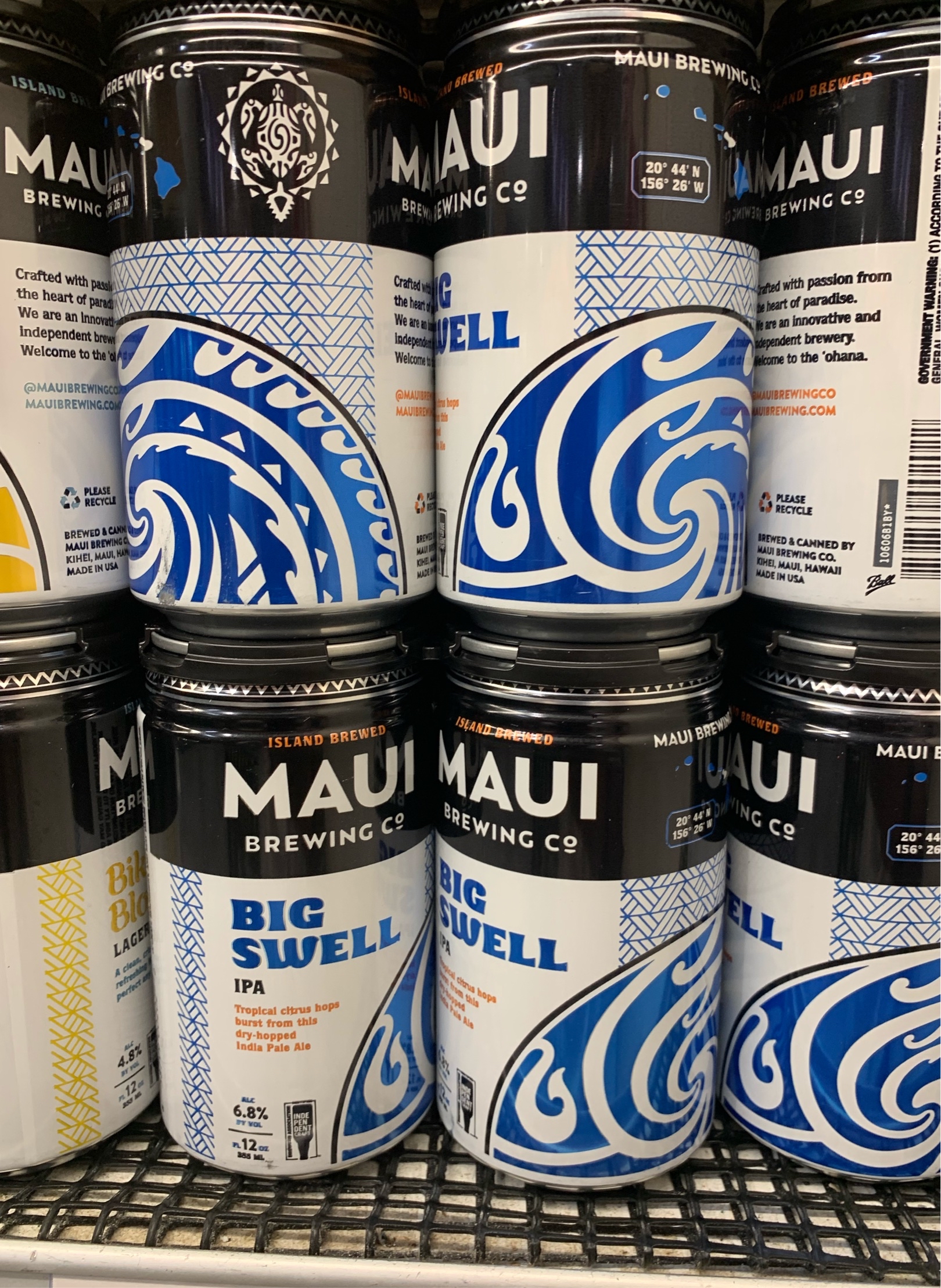
|
46036
|
|
ʻAmelika Hui Pū ʻIa
Honolulu
|
|
|
HK - This is another example of pidgin being used by the same local company. I found this at Foodland as well. Big Swell would normally refer to the waves of the ocean being picked up and it's producing some good waves to surf on. Big swell in the metaphorical way of drinking could mean, a big drunk or a swell of good beer is coming when you drink this. This may just refer to some surfers or targeted people who like to chill and relax, but locals nonetheless.
|
Multilingual Hawaiʻi
|
|
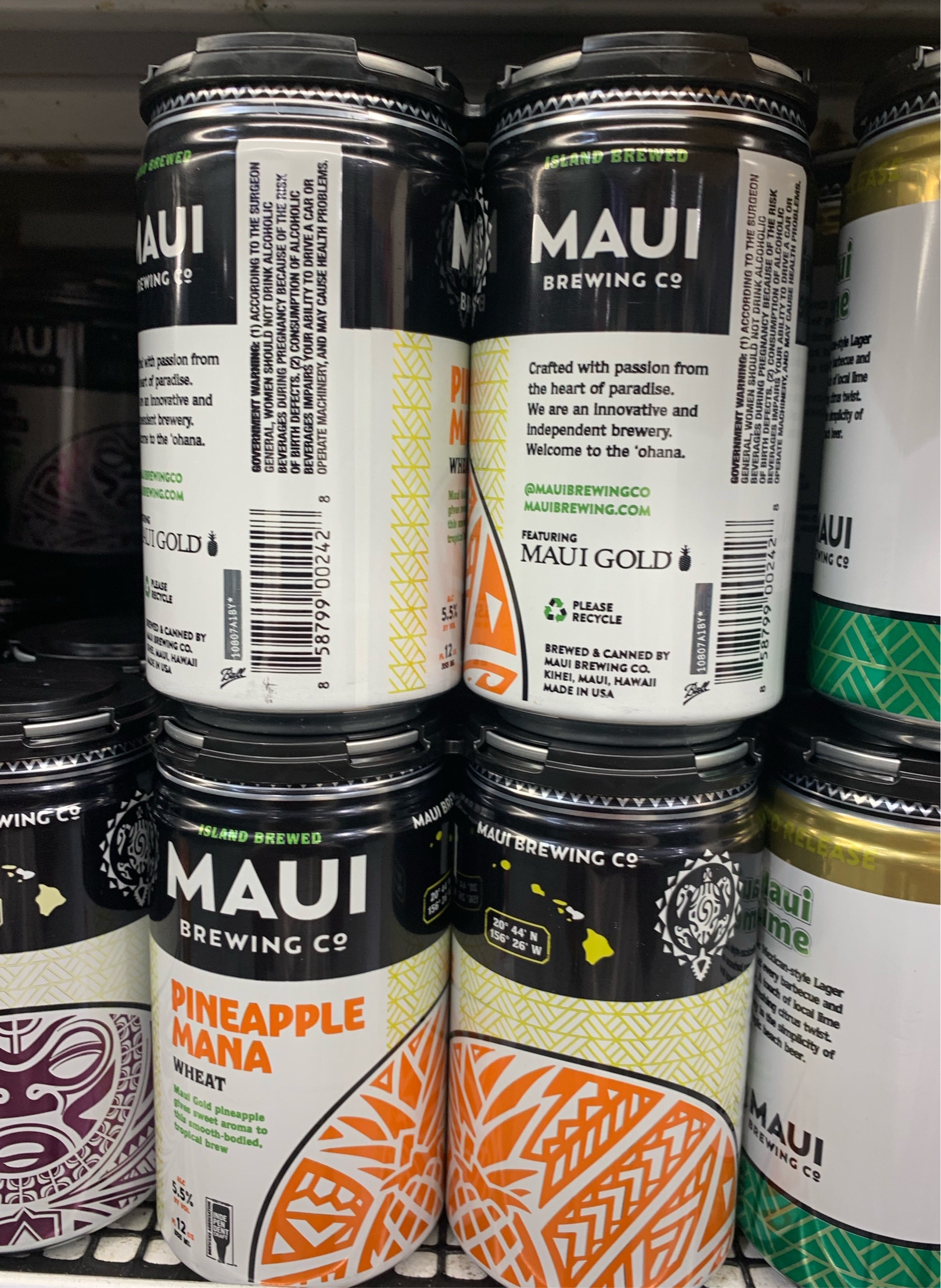
|
46037
|
|
ʻAmelika Hui Pū ʻIa
Honolulu
|
|
|
HK - Last Pidgin example of brewing examples, made by the same company, these are just some of their options here in Hawaiʻi. Pineapple Mana is the spirit or energy of Pineapple. We are saying that the purest forms of pineapple are in this flavor, captured in a can of ʻono beer. This might be a reach out to Haoleʻs who may want to try out this flavor and this company, though it may just be for locals.
|
Multilingual Hawaiʻi
|
|

|
47064
|
|
ʻAmelika Hui Pū ʻIa
Honolulu
|
|
|
HK - This is a bag that I found in Foodland in front of the cashier lines. It is Hawaiian and Pidgin present but I would like to point out the lower left-hand corner of the bag, Hana Hou. This is a very common saying where it can be used in both Pidgin and Hawaiian with the emphasis on using this saying for “do it again” whether that's a performance, an act, or an action, typically this is more common in performances such as shows or musical singing or dancing or playing instruments. This is just advertising the local culture here in Hawaiʻi to anyone that comes across this bag and I feel like it does somehow capture the spirit here.
|
Multilingual Hawaiʻi
|
|

|
47065
|
|
ʻAmelika Hui Pū ʻIa
Honolulu
|
|
|
HK - This is a bag that I found in Foodland in front of the cashier lines. It is Hawaiian and Pidgin present but I would like to point out the lower left-hand corner of the bag, Hana Hou. This is a very common saying where it can be used in both Pidgin and Hawaiian with the emphasis on using this saying for “do it again” whether that's a performance, an act, or an action, typically this is more common in performances such as shows or musical singing or dancing or playing instruments. This is just advertising the local culture here in Hawaiʻi to anyone that comes across this bag and I feel like it does somehow capture the spirit here.
|
Multilingual Hawaiʻi
|
|

|
47066
|
|
ʻAmelika Hui Pū ʻIa
Honolulu
|
|
|
HK – WE GO BEACH! – If you are a local this is straight pidgin, this is a poster that I found on one of the floors here at the freshman towers. I think a lot of the residents here may think it's bad grammar but we locals would only know, this is how we speak. One of the issues I think this kind of establishes is how we can bridge the gap of people who know pidgin and who donʻt.
|
Multilingual Hawaiʻi
|
|

|
47067
|
|
ʻAmelika Hui Pū ʻIa
Honolulu
|
|
|
HK – F**A is our pidgin slang for the F word. This is on numerous signs throughout Oʻahu and this seems like just some person wanting to be a nuisance. It's just graffiti and nothing more. Haole could eventually figure what this is without any knowledge of Pidgin.
|
Multilingual Hawaiʻi
|
|

|
47068
|
|
ʻAmelika Hui Pū ʻIa
Honolulu
|
|
|
HK - Here on one of the floors of the Aloha Towers in Mānoa, we have a wall of Hawaiian words up for display. Its targeted the residents of the towers. Ment to educate the Haole (Foreign) residents and also some locals who donʻt know the language.
|
Multilingual Hawaiʻi
|
|

|
47069
|
|
ʻAmelika Hui Pū ʻIa
Honolulu
|
|
|
HK - “Ua Mau Ka ea o ka ʻāina i ka pono” – The Life of the land is perpetuated in Righteousness” – Quoted from King Kamehameha III in Thomas Square, King Kauikeaouli proclaimed this to his people when the George Paulet incident was resolved from a brief takeover of Hawaiʻi. However, the British would continue to recognize the Independence of our nation and our Hae Hawaiʻi (Hawaiian Flag) would be raised again. There is more to this history but this is on the stage of the garden in the middle of the International Market. It is on a little plaque in the center of the stage. I feel that this should be made bigger because this is a crucial part of history that seems to be glanced over, especially how the history of this quote's origins is such an important aspect that the International Market does not seem to mention it. Only Hawaiians would know the history of this and the significance of what Kamehameha III said and went through. Should this history be mentioned or is it enough to have this quote for tourists and locals to see?
|
Multilingual Hawaiʻi
|
|

|
47070
|
|
ʻAmelika Hui Pū ʻIa
Honolulu
|
|
|
HK - Holoholo is a local term here in Hawaiʻi where the word is used in the context of going to hang out or “cruz.” “We go Holoholo.” This is a shop perpendicular to the International Market where multiple customers from tourists to Locals go to grab a quick bite or get some souvenirs. Although I am pretty sure that no tourist would know what this means and be amazed by how colorful it looks and all the items available for sale. It's not much about cultural appropriation but is it misinforming our “customers” in interpreting Holoholo as “Cafe and Market?”. We can see this a lot where people would be misinformed because of lack of information
|
Multilingual Hawaiʻi
|
|

|
47071
|
|
ʻAmelika Hui Pū ʻIa
Honolulu
|
|
|
HK - Pāʻina Lānai is the food court in the International Market down in Waikīkī. Pāʻina from ʻŌlelo Hawaiʻi is translated to “sharing a meal” and Lānai is like a porch area or a terrace. In the sense of putting these two words together, you create the English equivalent of a Food Court, although this isn't the direct translation, it can be interpreted like a Food Court. This commodification of Hawaiian to English is used all over Waikīkī with the International market being one place that uses and embraces the Hawaiian Culture for all Tourists to see. This targets tourists while also enticing locals with aesthetics.
|
Multilingual Hawaiʻi
|
|
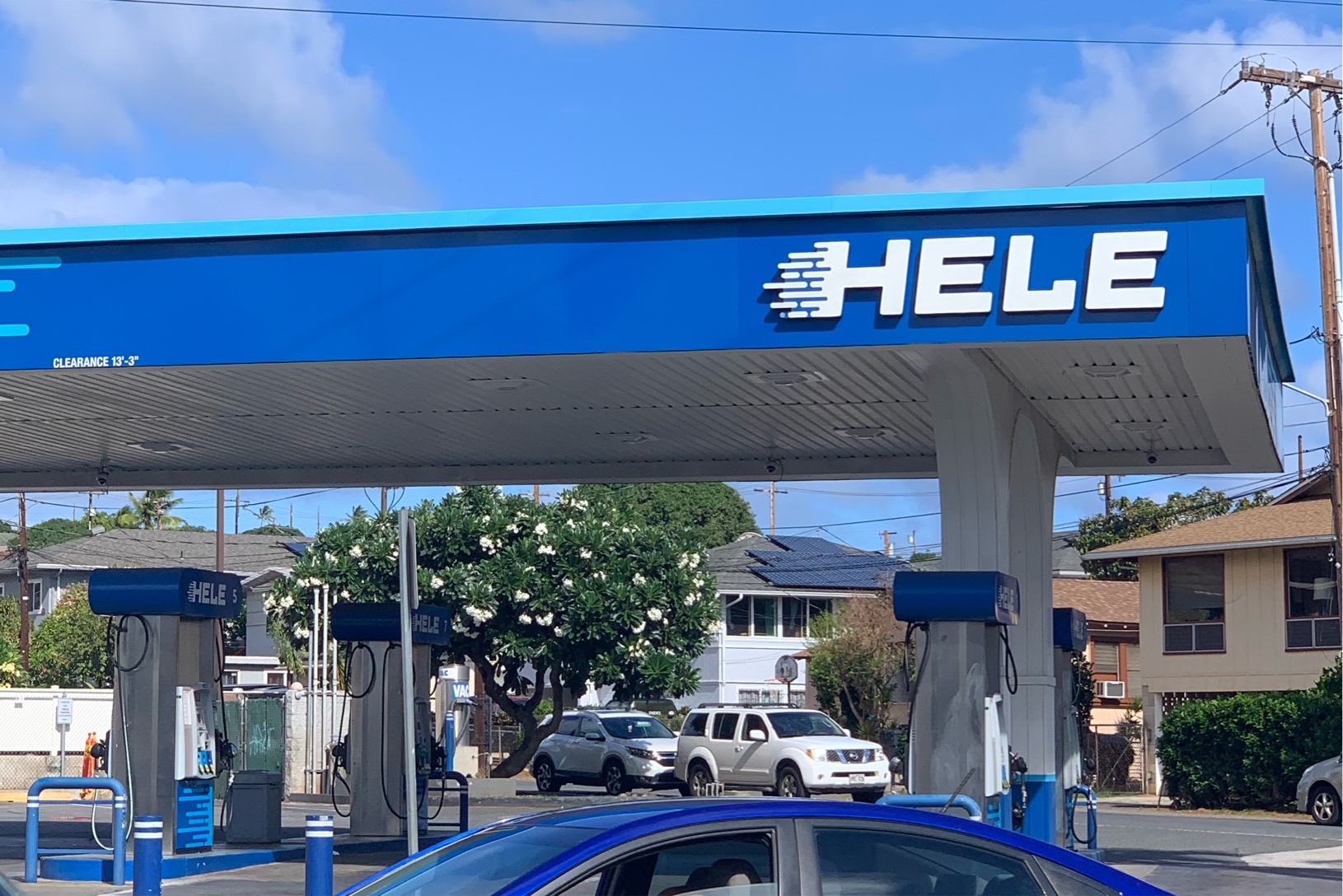
|
42491
|
|
ʻAmelika Hui Pū ʻIa
Honolulu
|
|
|
More and more businesses using Hawaiian, Like this Gas Station. Hele being translated as Go, To Go, Move, in this context this refers to cars and being to to fill um up and go! Anyone nearby by needs a quick fill up and go? Come yo Hele. The intended audience is for vehicular users that needs a fill up.
HK
|
Multilingual Hawaiʻi
|
|

|
108710
|
Ticiana Sprok
|
Kuwait
Hawally
|
|
|
In a diversified neighborhood, I saw a storefront with Arabic and English signage. What caught my attention in particular was the dual-language sign that triggered these thoughts: business ventures are responsive to the needs of their community. Having grown up in an area with a rich tapestry of cultures and languages, I appreciate how multilingual signs foster inclusivity. They give a sense of belonging and an opportunity for recognition to those who might otherwise be excluded. After all, this has been an experience that really puts to the test my understanding that language use in public spaces is not about information alone but also respect and recognition toward cultural identity.
|
Multilingual Hawaiʻi
|
|
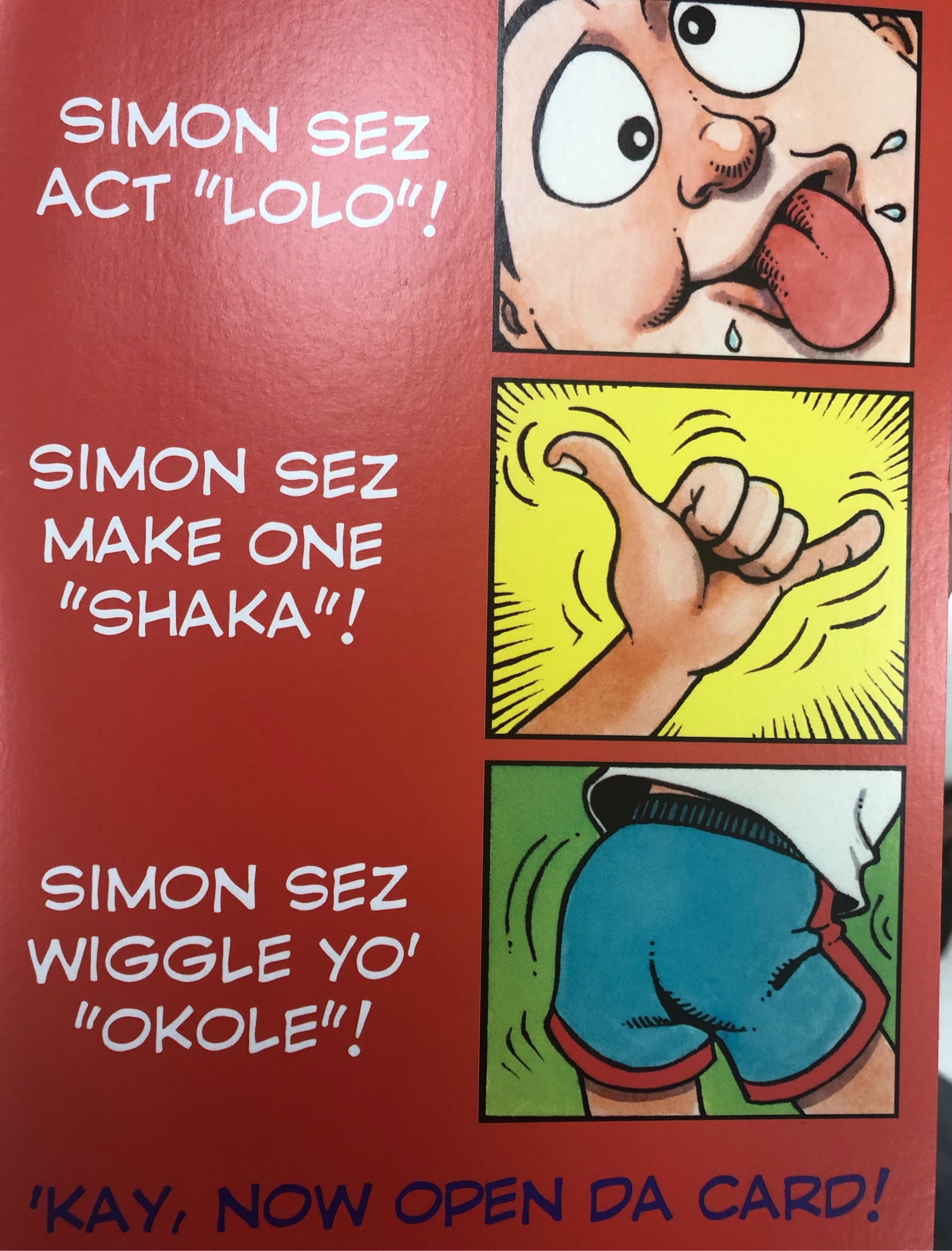
|
25088
|
|
United States
Honolulu
|
|
|
Act “lolo” can be translated to act crazy, make one “Shaka”, which means “hang loose” or the hand symbol associated with it, and wiggle yo “okole” meaning shake your butt. Lastly, “Kay, now open da card!” Translates to Okay, now open the card! This is authentic-symbolic. J.A.S
|
Multilingual Hawaiʻi
|
|
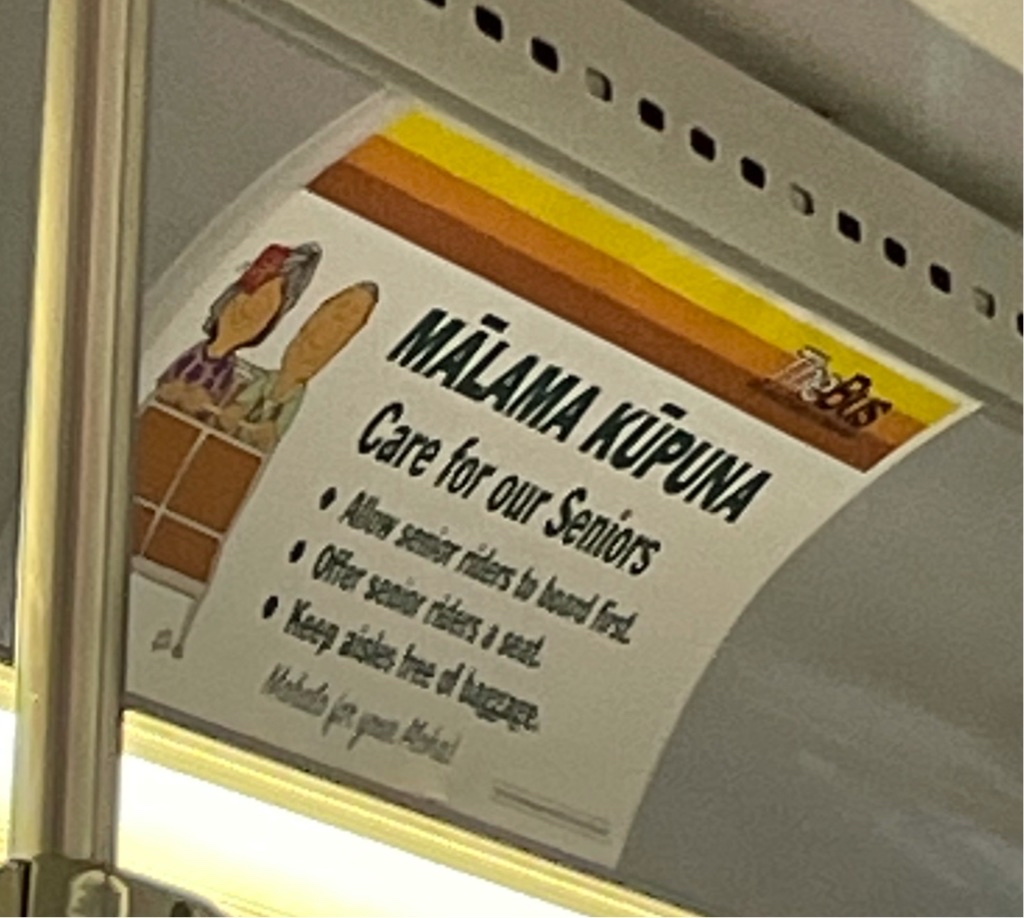
|
42496
|
|
United States
Honolulu
|
|
|
(SP) (photo taken while riding The Bus) this is a semipermanent paper sign taken while riding one of Honolulu’s Buses (transportation domain). It uses a heading of “Mālama kūpuna” and then the English translation of the phrase directly below it, which indicates that this sign’s audience is both Locals and tourists alike. Hawaiian may have been used to appeal to Locals’ value of taking care of those older than them, and to reflect a strong sense of “Hawaiian values”.
|
Multilingual Hawaiʻi
|
|
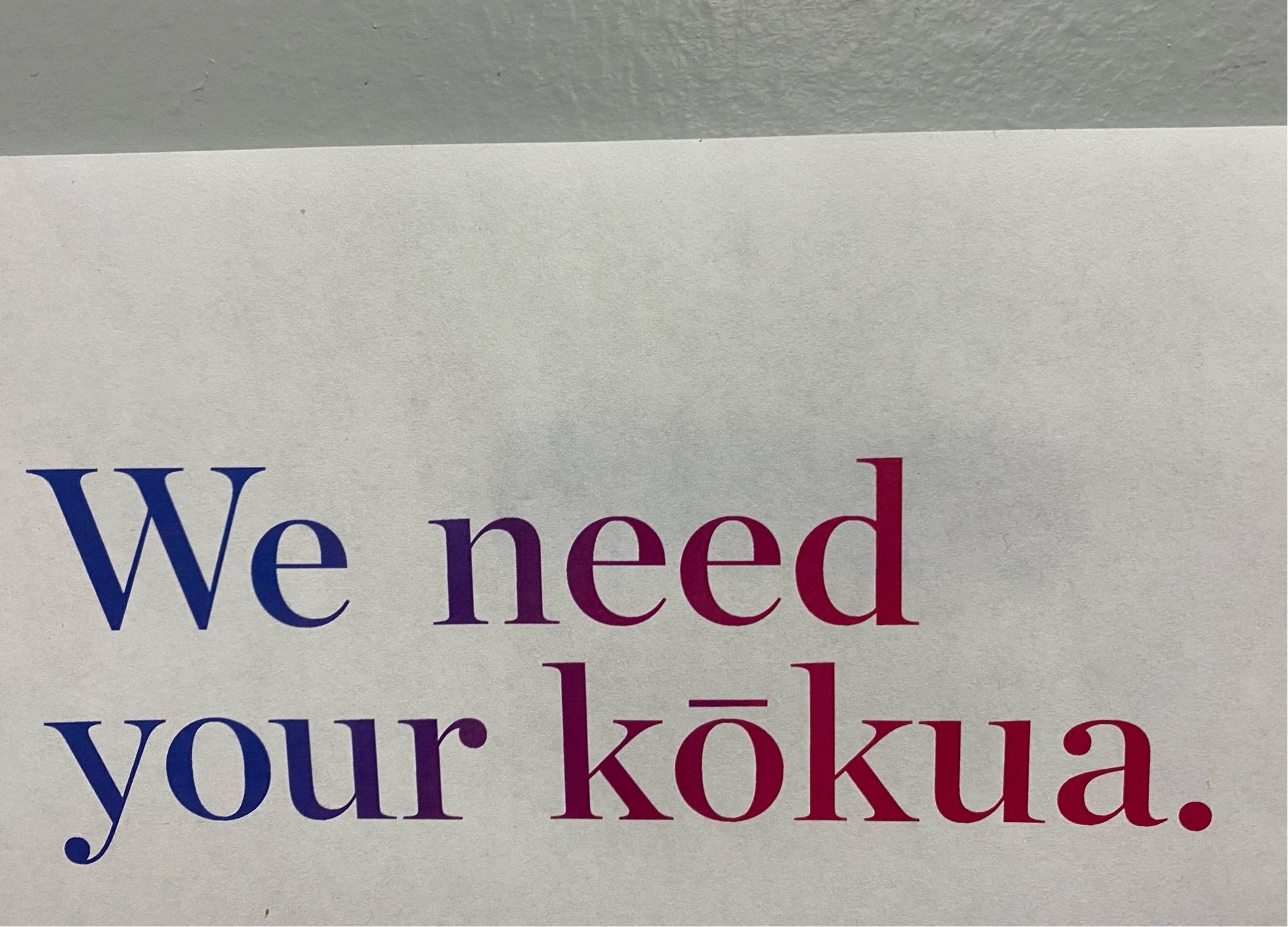
|
46080
|
|
United States
Honolulu
|
|
|
EL-S Checkip #2 : Languages used on this sign is English and Hawaiian. Languages presented all in the same way except Kokua is underlined. I think to emphasize kokua. The audience is general public. The domain is the airport. The sign is telling people we need your help. The sign is here to just let people know we need your help, it could be talking about anything.
|
Multilingual Hawaiʻi
|
|
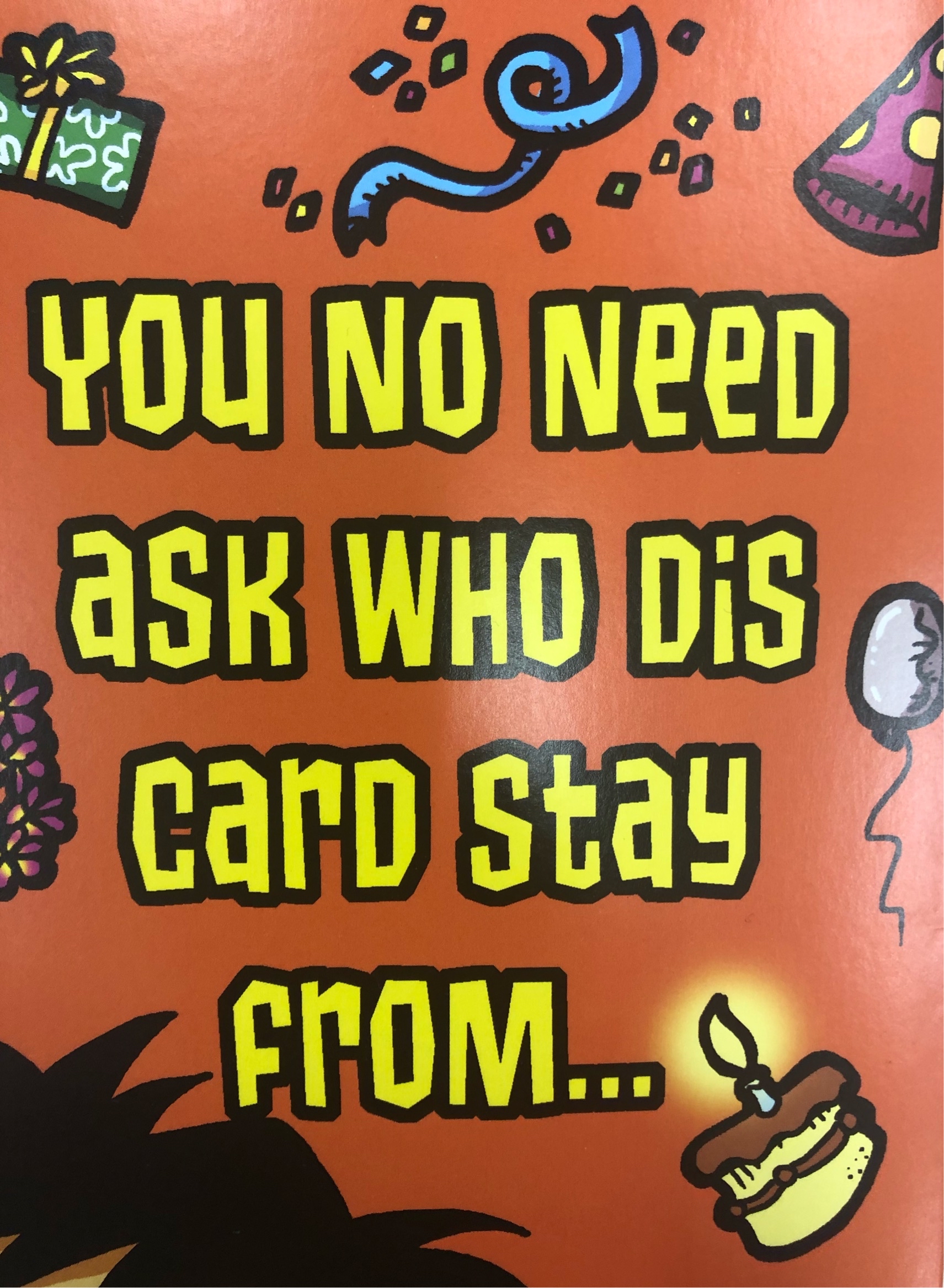
|
25089
|
|
United States
Honolulu
|
|
|
Implies you already know who gave you this card. Authentic-symbolic. J.A.S
|
Multilingual Hawaiʻi
|
|
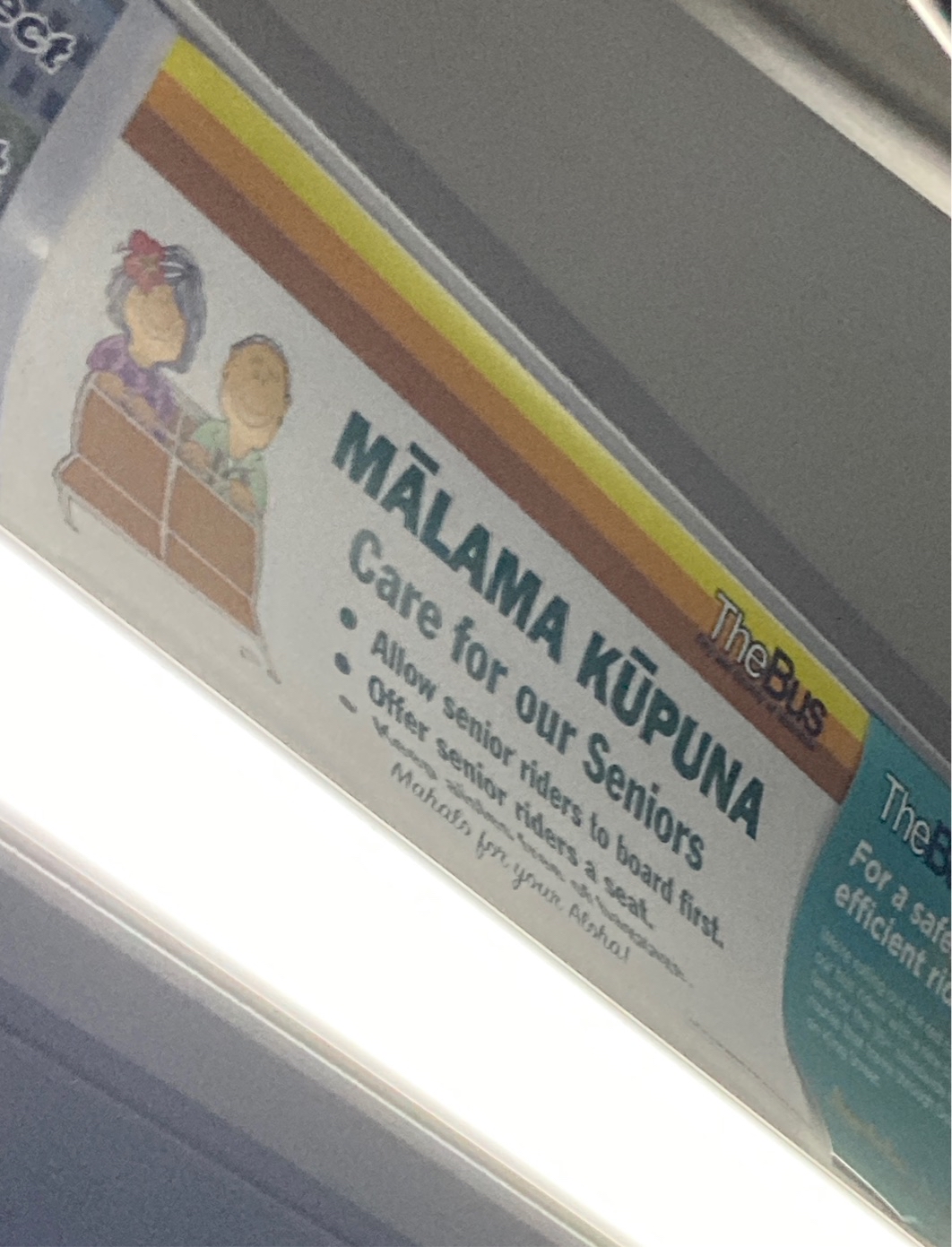
|
42497
|
|
United States
Honolulu
|
|
|
The domain is in a safety/warning, used to tell people to let seniors take the front seats. The sign is meant for both tourists and speakers of hawaiian, given that the translation is right below it
|
Multilingual Hawaiʻi
|
|
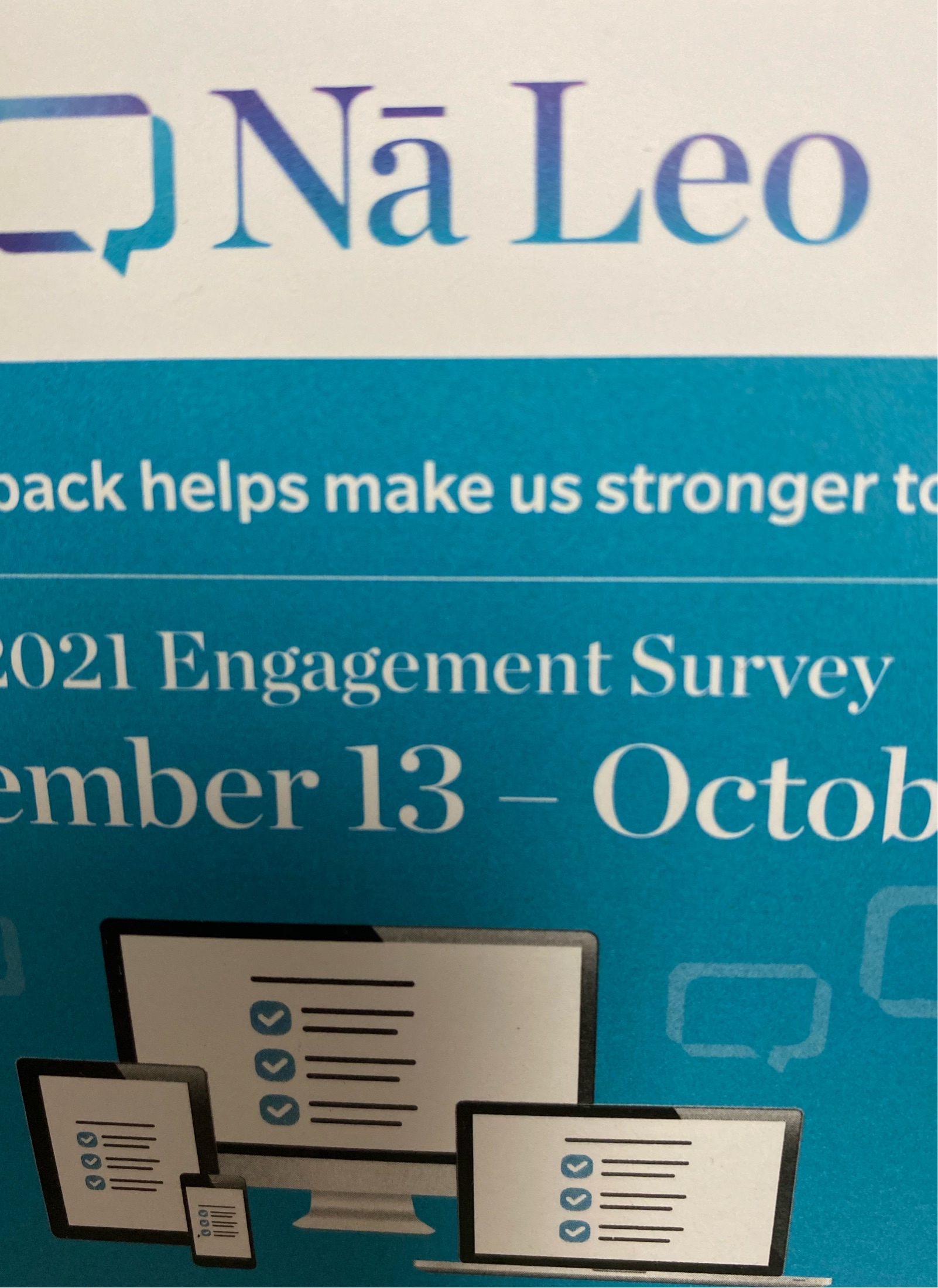
|
46081
|
|
United States
Honolulu
|
|
|
EL-S Check up #2 : Hawaiian and English are being used. The Hawaiian words are bigger than the English words. I think it’s to let people know what the survey is named. The audience is probably people coming in from the mainland to talk about their flight experience. The domain is work. The sign is trying to get people engage into a survey.
|
Multilingual Hawaiʻi
|
|
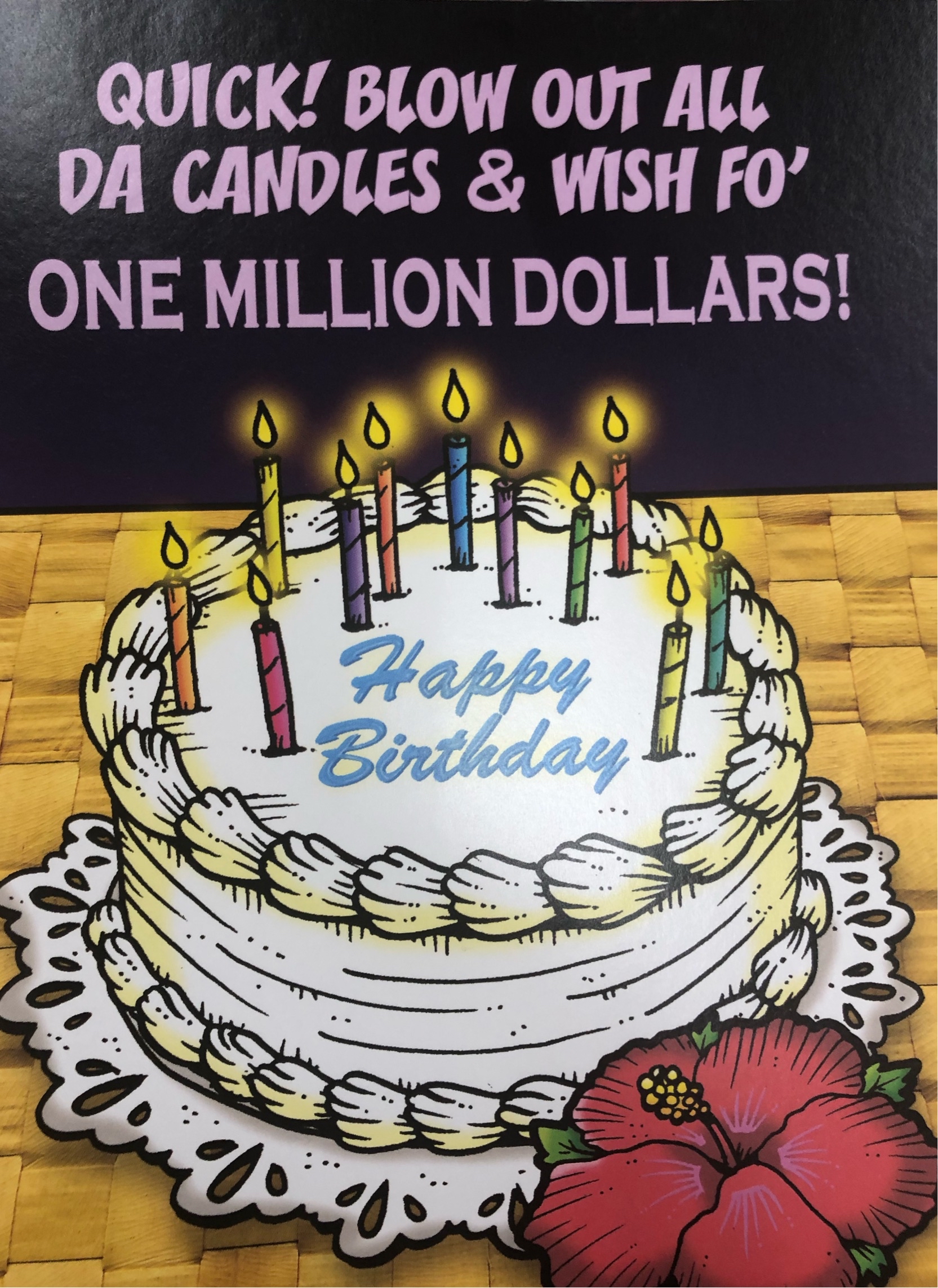
|
25090
|
|
United States
Honolulu
|
|
|
Birthday card. Symbolic-authentic. J.A.S.
|
Multilingual Hawaiʻi
|
|

|
46082
|
|
United States
Pearl City
|
|
|
EL-S Checkup #2 : Pidgin is being used. All of the fonts are mostly the same size. The audience is for those who are grocery shopping. The domain is a grocery store. The sign is telling the people what kind of food that is being sold to them for what price.
|
Multilingual Hawaiʻi
|
|